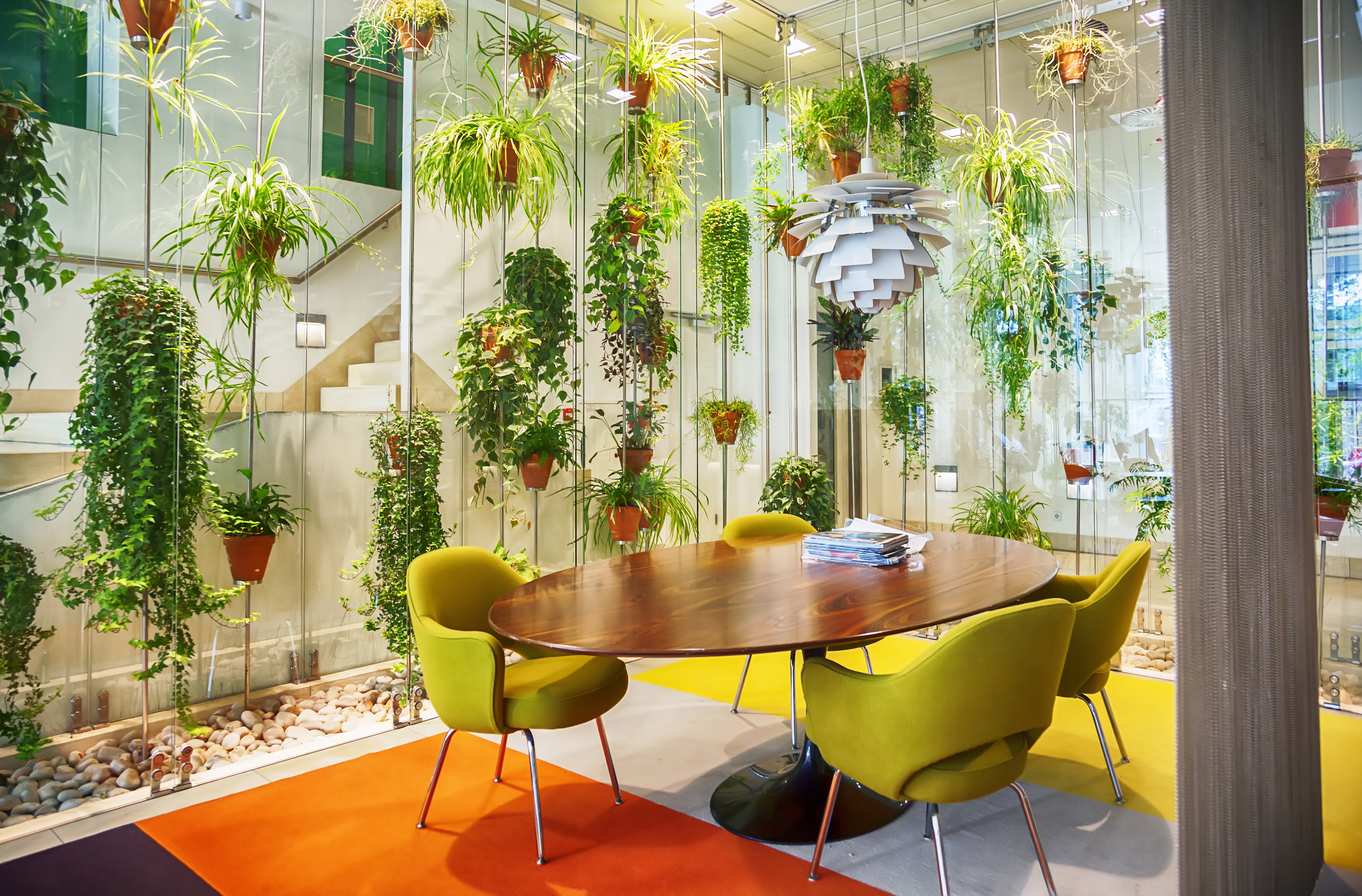It's great to see workplaces embracing wellness. Because employees spend significant time at work, our workplaces should be healthy environments. Adding plants to your workplace, especially your open office design can benefit employees by making the air healthier and reducing stress.
Before I discuss the benefits in more detail, I can’t help but mention my wife, who has been on the leading edge of the benefits of indoor plants. For decades, our home has been full of plants. What started as an interesting hobby with a few plants has grown into having multiple plants in almost every room. Our kids grew up calling our house “the jungle.” In middle school, my daughter brought home a sugar glider (a small furry marsupial that looks like a cross between a flying squirrel and a chinchilla) to take care of over a school break for her science class. Inevitably, this sugar glider escaped into the house and quickly scampered up a ficus tree. It flew across our living room to another ficus tree and climbed to the top branches, only to repeat the process many times. It was sort of like a chaotic game of “monkey in the middle” - if the “monkey” included two parents, two kids, two dogs, and two cats - all trying to catch (or eat) Rosie the sugar glider. It took two hours to see her finally, and though we were a mess, I believe Rosie had the time of her life.
After the event, our kids and I had a “sit-down” with my wife to express our concern about the growing number of plants in our house. (Could you possibly cut back by several dozen?) My wife vehemently defended every last plant claiming that they clean the air we breathe and provide a sense of calmness and harmony with nature. Who can argue against those points? The plants stayed, and, it turns out, she was right. Plants benefit our indoor environments and are an important part of the growing movement toward interior landscaping in office spaces.
Plants Clean the Air
A key health benefit of having plants involves cleaning the air. Plants remove carbon dioxide from the air and produce oxygen. Thus, having indoor plants in your workplace removes more carbon dioxide, which leads to a more oxygen-rich environment. Having more oxygen can reduce fatigue and stress, which can increase productivity.
Another way plants can improve air quality is by filtering the air to remove toxins. This helps us breathe healthier air and may reduce the rate of sickness in the workplace. A NASA study in the late 1980s placed common houseplants in an enclosed environment and put harmful chemicals in the air. After 24 hours, the air in the enclosures with the plants was substantially cleaner. In some cases, 90% of the toxins were removed. That’s a pretty powerful testament to the ability of plants to improve air quality.
Plants take harmful elements from the air to filter toxins and transport them to their cells and roots for storage. These harmful elements are then broken down by the plant or through fungi in the soil. A sample of dangerous airborne components plants removes includes formaldehyde, benzene, trichloroethylene, carbon monoxide, nitrogen oxide, and radon.
Notably, it does not take specialized plants to filter the air- common household varieties are effective. A sample of plants that effectively remove toxins includes Boston fern, rubber plant, philodendron, peace lily, and ficus trees (of course, my wife has all of these, and we already know that sugar gliders love ficus trees).
How many plants does it take to have cleaner air? The NASA study concluded that it took 15 to 18 plants per 500 square meters - or about one plant for every one hundred square feet of office space.
Plants Reduce Stress
Plants help reduce stress and anxiety in the workplace. A 2011 Australian study found that having plants in the office can reduce stress and improve the mood of employees. Over the three-month study, employees who had plants placed in their offices showed a 30% to 60% reduction in stress and negative feelings. Employees without plants had a 20% to 40% increase in anxiety and negativity. Further, it was found that just one office plant per office or workstation could make a difference.
In another study published in the Journal of Physiological Anthropology, research participants were asked to perform one of two tasks. Either transplant a plant from one pot to another or perform a task on a computer. The group that transplanted plants felt more comfortable and soothed than those who worked on the computers. Working with the soil and plants can lower our diastolic blood pressure, help us feel more relaxed, and promote a connection to nature.
Having plants in the workplace can improve the air we breathe, lower our stress and happiness, and increase our productivity. I must admit that I recently liberated one of my wife’s plants and added it to my office. I took it from a cluster of plants (others might call a hedge) in a corner of our living room. She noticed it was missing immediately and visited my office to ensure the plant had the appropriate amount of light and water. I am sure the plant will reduce my stress over the long run but for now, I have the anxiety of taking proper care of her plant, or else I’m sleeping on the couch!










.jpg)


.jpg)
.jpg)
-1.jpg)
.jpg)
.jpg)
.jpg)
.jpg)
.jpg)

